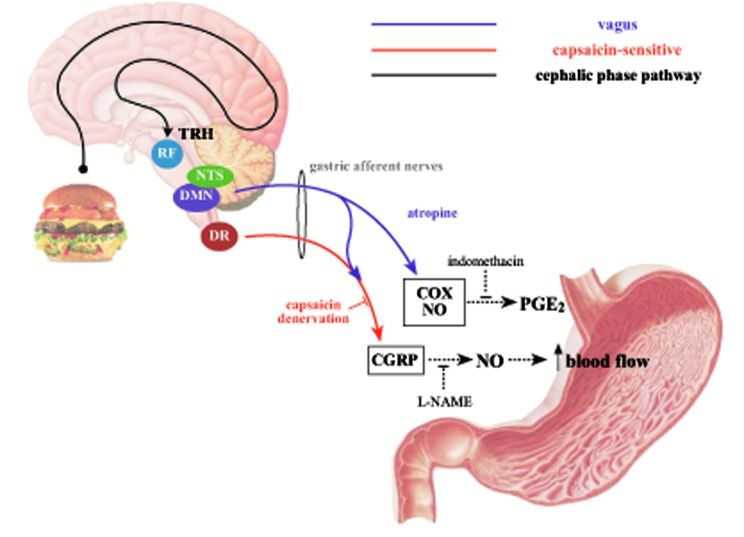Fig. (1).
Gastric mucosal protection and brain neuropeptides. Gustatory, olfactory and visual informations, by diencephalic and telencephalic projections, reach raphe pallidus and activate thyrotropin-releasing factor (TRH)-containing fibers. TRH stimulates dorsal vagal complex [formed by dorsal nucleus of the vagus (DMN) and nucleus tractus solitarius (NTS)], where vagal-mediated activation of endogenous gastric prostaglandin E2 (PGE2) and nitric oxide (NO) arise. Moreover, vagal afferent pathway recruits calcitonin gene-related peptides (CGRP)-containing capsaicine-sensitive splanchnic gastric afferents. The spinal sensory neurons have their cell bodies in the dorsal root (DR) ganglia and reach the stomach via the splanchnic and mesenteric nerves. In contrast to vagally-mediated gastroprotective effects, protection following stimulation of afferent sensory neurons by capsaicin is independent of the gastric PG system. NO appears to be the final effector of CGRP pathway; in fact, protective effect is blocked by a NO-inhibitor, N-nitro-L-arginine methylester (L-NAME).

